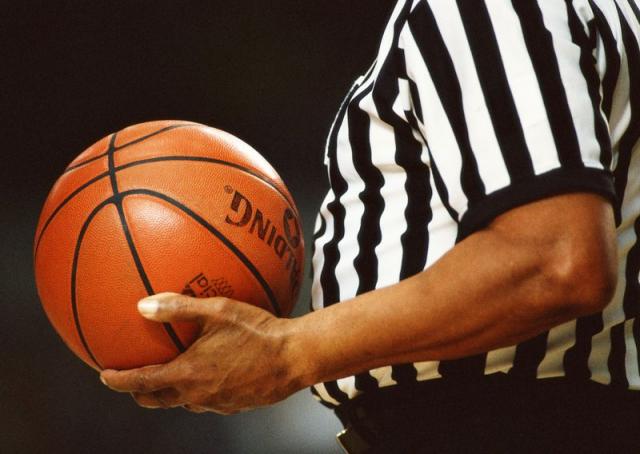Show me where the NBA rulebook calls for a 225-second long timeout. Nearly four minutes of stoppage saps excitement.
— Henry Abbott (@TrueHoop) June 13, 2012
Over the past few months, ESPN’s worked on a project called #HoopIdea, with a simple goal: make basketball better. Here’s one of my suggestions to improve the game.
Enforce the time
In theory, the timeout structure is fine. It’s in practice where things fall apart.
Take a look at last night’s game. Exciting basketball, some of the best this season, but you could take a nap in the time-out time. It’s not individual, but endemic; earlier in the season, Abbott took a stopwatch to the last two minutes of crunch time in some select games, and found that each one took longer than ten minutes. It’s an absurd waste of time; we’re here to watch basketball, and yet less than 20% of the highest-stakes moments include the sport.
I looked at one Nets game: March 4th, against the Charlotte Bobcats. One of the worst teams in the NBA against one of the worst teams in history. Not a game you’d expect to drag on anywhere but in your fragile psyche merely for watching it. But perception mirrored reality: the final 37.6 seconds alone took over 11(!) minutes.
No game need drag on that long. Especially Nets-Bobcats.
The NBA changed its rules in 2001 so that “full timeouts in regulation and overtime will be reduced from 100 to 60 seconds,” with two exceptions irrelevant to the end of games. But all four timeouts taken in the final 37.6 seconds of that Nets-Bobcats game lasted longer than their designated times. It’s a practice fully unchecked.
For instance, the Bobcats timeout taken with 37.6 seconds left, a full “60-second” timeout, took 102 seconds from the whistle to the ball touching the inbounder’s hands. Maybe the referees were time-travelers, sent to the future from 2000 to slow down basketball games again. A later “20-second” timeout took 67 seconds from whistle to inbounder. That 20-second timeout took 30 seconds longer than the rest of the game’s running time. It’s impractical. Why make consumers slog through a game they enjoy?
Some may cry ad revenue, but that’s not always the case — in Charlotte, the game didn’t go to commercial once in those final two minutes. Or, imagine a regular 48-minute episode of Mad Men taking three hours, purely in the name of generating ad revenue. No showrunner, no channel, no audience would have it.
A 20-second timeout works in theory. But it’s not what we have.
Put the ball in play
“Enforcing time” is the abstract. It’s about putting it into practice.
In today’s game, when the coach or player calls a timeout in the final two minutes, the whistle blows, the players walk over to their benches, the referees stand around with the basketball, the teams talk as long as they need, and eventually the players saunter back onto the court. There’s little rhyme or reason to when a timeout ends, just when it “feels too long.” But there’s a solution to that, so simple that it’s shocking they haven’t utilized it: the clock.
During the game, seconds are rigidly enforced, to the point where every shot near the end of a buzzer is subject to rigorous examination. Did a shot get off in time? Was the ball still grazing the edge of his fingertips as the red light came on? We need justice! We must know if the game is on! Until, of course, time-outs set in. Then game time stops, and we’re transported to an alternate dimension where time is not relative, but arbitrary.
In my NBA, once the huddles converge or five seconds passes from the timeout whistle, the clock begins to run: 20 seconds for a :20, a full minute for a :60. The referee, rather than holding onto the ball, lays the ball on the sideline or baseline at the eventual inbounder’s location. Once the buzzer sounds, the inbounder has ten seconds to pick up the ball at that location, and then the usual five seconds to inbound once the ball’s picked up. (I’d like to add here that this wouldn’t apply to video reviews during timeouts — in my NBA, the time-out clock would begin after a review has been decided.)
The maximum a 20-second timeout would ever take in this instance: 35 seconds, almost half the time of the timeout referenced earlier.
This added wrinkle gives teams the need to strategize. NFL games, despite extended moments without on-field action, tend to function with a great pace that draws fans. Once a player is down, the clock gets reset to 40 seconds. If either team’s not lined up and ready to go within those 40 seconds, someone’s going to get burned. However, most plays go off without a hitch, since teams generally understand how to manage the clock. It’s part of the fabric of their game.
To put it in basketball terms, it’s as if each play comes with a 40-second timeout.
If you leave the ball in play — on basketball’s equivalent of the line of scrimmage — it puts the power in the player’s hands. They (and the clock) dictate when and how the play starts. The defense has to be ready in time, or the offense has every opportunity to burn them downcourt for an easy basket. Theoretically, neither team has to return to the huddle — if the offense understands their playcall, the inbounder could stand right by the basketball, ready to fire it in on the 20-second buzzer to a teammate at the rim. And the defense can’t rely on the referee waiting for them to set up.
I’m salivating at what Gregg Popovich could do to an unprepared defense late in games. Imagine LeBron James waiting to hoist a cross-court pass to Dwyane Wade. Would the Chicago Bulls even return to their huddle in crunch time on defense? Just wait for a team to fail — could you imagine the embarrassment if a defense didn’t make it out in time, only to give up a game-winning basket?
I’m sure you can, and I’m sure coaches can, too. That’s why it’d succeed.
Basketball is a deep, rich, well-paced game based on smart coaching and players making plays. There’s so much to be done to improve what’s already the greatest game on the planet, particularly in the times when it’s potentially as exciting as it gets. You can give teams enough times to strategize in games without boring your viewers with dragged-out shots of the crowd and the huddles that they can’t hear.
Give the power to the players and the coach, not an arbitrary misunderstanding of time, and you’ll see the seconds tick off the game clock more efficiently, giving the game a new flow and pace. It beats four minutes of wading through nothing.



















